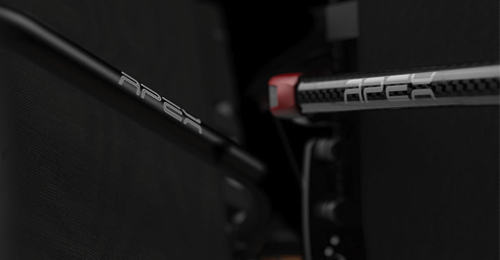
Understanding the benefits of each in order to choose the best option for your needs.
Motion Composites offers a range of wheelchairs in both aluminium and carbon fiber. This blog article will explore the selection of carbon fiber and aluminum, including the benefits and uses of each material. Understanding how each material can affect wheelchair comfort, cost, and durability is vital when exploring your options for a new wheelchair.
What is carbon fiber ?
Carbon fiber is an extremely strong but lightweight material made up of very thin strands of carbon fibers. Traditionally carbon fiber has been used in industries such as Aerospace and Automotive, due to its unique properties. Today, the material is increasingly employed in other industries such as high-end sports equipment, bicycles and other applications requiring high strength with low weight. Motion Composites was one of the first companies in North America to successfully use carbon fiber to develop one of the world’s lightest wheelchairs.
Carbon fiber can be up to ten times as strong as steel while weighing one-fifth as much, making it ideal for wheelchairs. A lighter wheelchair means less energy expended and a decreased risk of upper extremity injury for the user, therefore lowering weight as much as possible is a logical goal.
Choosing carbon fiber over aluminum
The next question then becomes, when comparing carbon fiber to aluminum, which option is best at similar weight ?
Carbon fiber has several unique properties that make it an appealing option for wheelchair design. Motion Composites users have described reduced chair vibrations in moving from an aluminum frame wheelchair to a carbon fiber one. In scientific or engineering terms, this is referred to as ‘vibration damping’ and is an important characteristic of carbon fiber. Aluminum tubes dampen vibrations less than carbon fiber, therefore the user will feel minor bumps and surface obtrusions more than with a carbon fiber frame.
Aluminum can also be subject to oxidization over time, which can affect the structure of the wheelchair especially if it occurs around joints and screws. Carbon fiber cannot rust nor oxidize. However, it can crack if subject to extreme pressure far in excess of what is likely under normal use. Therefore, a carbon fiber wheelchair is likely to last longer and maintain its integrity longer than an aluminum frame. Carbon fiber also has very low thermal conduction, meaning it will not get as hot or cold as aluminum. On a very hot or cold day, a metal wheelchair can radiate a significant amount of heat or cold, making it uncomfortable for the user. The integrity of a metal frame can also be affected over time by expansion and contraction due to temperature changes.
For some users, the raw look of carbon fiber can also be appealing and make their chair appear sportier. Both types of frames can be painted, and Motion Composites offers painted frames in many different exotic colors on several of its models.
Manufacturing carbon fiber is much more time consuming and costly than aluminum. Using it in production raises the cost of carbon fiber wheelchairs in comparison to their aluminum counterparts. The added cost is an important consideration when weighing the benefits of carbon fiber.
In conclusion
Cost considerations aside, carbon fiber is generally considered to be a superior choice over aluminum when selecting a wheelchair due to its unique vibration dampening properties, durability, thermal properties and - subject to individual taste - aesthetics. Regardless of which type of wheelchair is chosen in the end, all Motion Composites customers are guaranteed an exceptional, long-lasting product.
Make sure to visit the technology section of our website to learn more about carbon fiber.
.jpg)





